Trippingg Abroad
The Land of the Rising Sun - November 2024
Every morning when you wake up you have to pinch yourself. But then you really don’t need to. Your hotel room is almost as large as the small bed you have just woken up in. Yes, this is Japan! And you are living a dream. This is your third morning in Tokyo and you need to wake up from that dream no more as you have another long list of places to go see today. As you slowly immerse yourself in this incredible feeling called Japan, you are still not sure what exactly happened that made you wish to come to Japan in this incredible year and how everything fell in place and why the nice folks at the Japanese Embassy in New Delhi granted you a five-year multiple-entry visa. Japan just seemed like that place sweetly out of reach – something that you could only covet. Well now that you are here you are making the most of it and that includes extensive use of Tokyo metro and walking 25K steps each day.
 |
| Gingko Trees of University of Tokyo |
 |
| Dazzling Shibuya Streets - Tokyo, Japan |
Like the previous days you will walk the short distance from your hotel in Edogawa City to the Nishikasai metro station. Just like London, the air is fresh and sharp and the streets scrubbed clean and some more. The skies are blue now but will soon become overcast. Hint of fall colours can be seen outside the station. Of course, the fall blockbuster show waits for you in Nikko tomorrow. You have now become familiar with the ways of metro. You will charge your IC Suica card on the ticket machine as you watch it swallow the sepia yen billnotes. Suica metro card can be scanned to travel on the metro and will buy you the lunch sandwich at 7-11 or Lawson or Family Mart convenience stores - called konbini - located practically everywhere and can even be used on the vending machines. Japan is the land of Vending Machines and practically everything is available in these machines from colourful beverages to snacks and toys.
 |
| The ticket machine dispensing the IC Suica Card - Japan |
 |
| The Vending Machines are everywhere |
-----------------------------------------------------------------------------
Life in the Metro!
 |
| Nishikasai Metro Station, Tokyo - everything looks clean and washed |
 |
| The machines to buy metro tickets and charge cards - Japan |
 |
| Ginza Station, Tokyo |
 |
| Look how orderly the line is up the escalator and now compare it to home! |
 |
| The JR Nippori Station - Tokyo |
 |
| Helpful Signs Everywhere in English |
------------------------------------------------------------------------------
Today, the travel to the first location will take about 45 minutes and you will use three lines – Tozai (sky blue), Ginza (orange), and since you will be moving to suburbs, the JR (Japan Railways) JK Keihin-Tohoku line. The north gate will take you to the Nippori Fabric Town – a haven for DIY sewingheads! But you will exit from the south gate of the JR Nippori Station and will straightway walk up the stone pathway to Tenno-ji Temple and Cemetery.
 |
| Metro Map from Hotel to Nippori Station |
 |
| Today's tour map - will involve both walking and metro rides |
 |
| Tenno-ji Temple with Buddha - Yanaka, Tokyo, Japan |
 |
| Bishamonten Shrine at the Tenno-ji Temple, Yanaka |
 |
| Tennoji Temple - Copper Buddha |
Taito ward of Yanaka district is northeast of Tokyo and the furthest you have travelled so far in these three days. This is a historic part of Tokyo evocative of the Edo era (1603-1868). The quiet Tenno-ji Temple established in 1274 (oldest in Yanaka) belonging to Tendai sect of Buddhism does not have any visitors this early except an elderly man exercising. A beloved copper Buddha popularly called Tennoji Daibutsu created in 1690 sits on the edge on left. Like most temples here, this temple too suffered in the civil war and was rebuilt but the Buddha statue survived. A shrine on the grounds is the home of Bishamonten, the god of Bravery and Resources. You will spend some serene moments here soaking the vibes of Old Tokyo. Neon Tokyo will dazzle you in the evening.
 |
| The lady and the Pooch! |
A lady with her little pooch has just come in that reminds you of the small dogs of England. But here you discover another amazing Japanese thing that elevates Japanese civic sense to the unprecedented top level. While folks in England carry poop bags to clean up after their dogs, here in Japan, the folks carry a water squirt bottle. Not just poop, if the doggie pees, then the owner will spray the dog’s pee on grass or pavement with water to dilute it. Little things like this, elevate Japanese society and the country to the greatest level. Coming to Japan is not just about looking at the sights; it is about observing the people as they go about their daily lives whether it is the train driver pointing at the signals or the overwhelming warmth and respect shown by a shopkeeper.
 |
| Taito City - Yanaka Cemetery |
 |
| Yanaka Cemetery - The Cherry Blossom Alley |
 |
| Tokyo - Yanaka Cemetery |
It is time to walk through the Yanaka Cemetery or Reien that was called Yanaka Bochi before the nationalistic Meiji Restoration movement that involved separation of Shinto and Buddhism. The event that took place in 1868 overthrew the Tokugawa clan and restored the imperial family. This lovely cemetery along with the grave of the last shogun Tokugawa Yoshinobu who died in 1912, has Tokugawa family graves and some 7000 graves of noted personalities. You walk along the wet stone paths trying to make sense of this densely packed graveyard. The graves along with granite blocks have these wooden planks with messages. The arrangement is making you curious. Apparently, the wooden planks called sotoba engraved with name and date are added on every anniversary. A cherry blossom Sakura alley runs through the cemetery offering one of the most scenic spots in spring.
 |
| Tokyo Neighbourhoods |
This is a pretty neighourhood but then all neighbourhoods are this pretty and orderly in Japan. But then where are the residents? You don't hear the usual neighbourhood buzz or the sounds of babies. The great mystery is the street macadam. It is kind of bouncy and the colour seems to change every now and then. You are not sure but they could be using some recycled material. Even these narrow streets are marked immaculately along with the green pedestrian path.
 |
| Choan-ji Temple in Yanaka |
 |
| The Stone Slab Itabi in Choan-ji Temple - Yanaka Tokyo |
 |
| Hogai Kano Grave at Choanji Temple |
Just up ahead is the Choan-ji Temple that was set up in 1699. The temple has four Itabis – stone slab stupas with Buddha imagery and Sanskrit characters made during Kamakura and Muromachi periods (12th to 16th centuries). The temple also enshrines Jurojin, the deity of long life and the temple is part of circuit of seven temples here in Yanaka constituting the Yanaka Shichifukugin Meguri (Tour of Seven Deities of Good Luck). The graveyard contains the remains of Hogai Kano (1828-88), a celebrated Japanese painter who established the present-day Fine Art Faculty at University of Tokyo.
 |
| Tsukiji-bei Wall of Kannon-ji Temple |
 |
| Kannon-ji Temple - Yanaka, Tokyo |
 |
| Kanouin Temple, Yanaka in Old Tokyo |
 |
| Love these detailed maps everywhere - aesthetic and full of trivia and knowledge - this is how it is done - Yanaka Neighbourhood - only sign of graffiti seems to be by some Western! |
You pass this wall of the likes you have not seen before. While researching this post and retracing the path you walked, you zoom in on the local map signboard (they are all so amazingly designed and aesthetic) and come upon this temple called Kannon-ji Temple, a Shingon sect temple built in 1648. This mud and tile wall called Tsukiji-bei Wall or Fence is a surviving section of the Edo period, of which very few have survived in Tokyo. The temple is associated with the story of 47 Ronins (a samurai has a master and when the master dies, samurai becomes a ronin) who got together here in this temple to plot the revenge for the killing of their master. The graves of these 47 Ronin are in the Sengkuji Temple cemetery, 15 kms to the south. This story called the Ako Incident of the 18th century is a popular theme for plays and films that portray loyalty and bravery. This is amazing how even little heard of historical places have so many stories to them.
 |
| Daenji Temple, Yanaka, Tokyo |
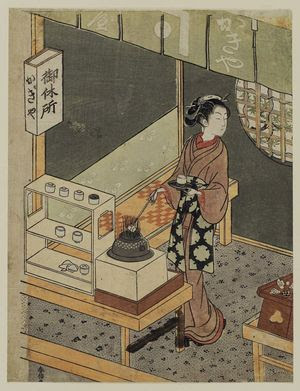 |
| Kasameri Osen - wiki photo |
 |
| Stone Monuments of Kasamori Osen and Suzuki Harunobu - Daen-ji Temple, Tokyo |
The temple run continues and it seems Yanaka just like Kyoto is densely packed with temples on every street. This is Daienji Temple and it too has an interesting story. Kasamori Osen was a beautiful waitress at the tea-house Kagiya in front of Kasamori Inaya shrine (probably at this same spot). Suzuki Harunobu (1725-70) was a Japanese designer of woodblock print art in the ukiyo-e style. Osen was probably his muse and she would become popular in Edo after Harunobu depicted her in Nishiki-e colour prints. You are not sure if there was the angle of love but still its a lovely story. The temple has both their stone monuments – a beautiful temple for a renowned painter and his beautiful muse.
 |
| The Nepali restaurants and food that will sustain a vegetarian you in Japan. Japanese cuisine is not really rice based where meat can be substituted with eggs and tofu |
We are moving from Taito City to Bunkyo City. It is here that you run into your first Indo-Nepali restaurant in Japan. Japan is tough for a vegetarian and the cuisine is unlike Thai / Vietnamese / Khmer where you would ask for the meat to be replaced with egg and tofu. You have somehow managed so far but this is God-sent. For the remaining days in Japan, you will be lucky to find a Nepali restaurant across cities of Kawaguchiko, Kyoto, Hiroshima and several in Okinawa. Okinawa has a sizeable population of Nepali folks with who you would chat over the three days you will spend there before flying out of Japan.
 |
| The lovely ladies who posed for you - Nezu Shrine - Tokyo |
And then you chance upon
this gem of a temple. Nezu Shrine is one of Japan’s oldest shrines spread out
over interesting landscape with beautiful elements; a microcosm of temple
complexes you would encounter in Kyoto in the coming days. The lovely
architecture is Gongen-Zukuri style of the Edo period. Luckily, the temple was
unharmed during earthquakes and firebombing of Tokyo. Unlike the tourist
inundated Senso-ji Temple that you saw on the first evening, there are almost
no tourists here. Only few locals come, pray and leave. This is the Tokyo of
several decades ago when only the most intrepid of tourists would come to
Japan.
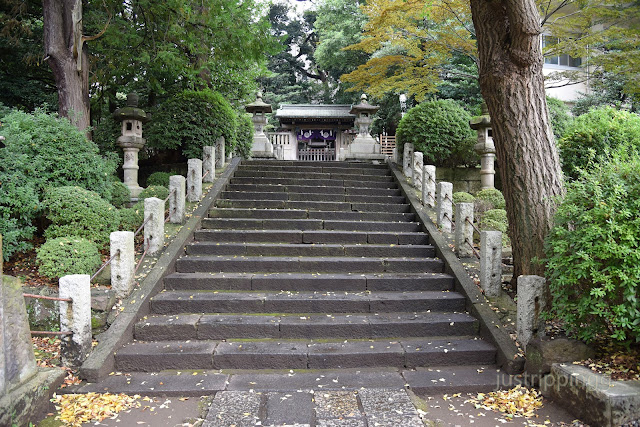 |
| Komagome Inari - Nezu Temple |
 |
| Nezu Temple - Approach from Uramonsaka Slope, Tokyo |
A large otorii gate leads you into the complex. You will later realise this is on the opposite side of the main entrance. Entering through here means you will first see the Otome Inari Shrine first, dedicated to Shinto deity of rice, fertility and prosperity. You are amazed to see the foxes guarding the portal. The foxes or kitsune wearing red bibs are messengers of Inari and are believed to possess magical abilities.
 |
| The Four armed Deities similar to Indian iconography and the Three Wise Monkeys of Gandhiji - Nezu Shrine, Tokyo |
 |
| The Senbon Torii Tunnel - Nezu Shrine |
 |
| The red bib wearing Foxes or Kitsune, the messengers of Inari - Otame Inari Shrine - Nezu Shrine, Tokyo |
 |
| The pretty and so Japanese looking Oki Pond in Nezu Shrine - Tokyo Japan |
On the left you can see
four armed reliefs on a stone pillar. You are not sure what they are. You can
also see the Three Wise Monkeys of Gandhiji. You will see more of them in the
grand Toshogu shrine in Nikko. Is this symbolism rooted here in Japan or did it
come from India? From here the most Japanese of all, a vermillion Torii gate
tunnel goes up the hill. The gates are not too high and you will have to bow
down a bit as you go up and down several times. In Kyoto, of course Fushimi
Inari-Taisa shrine has the biggest Torii gate tunnels traversing over the
mountain. Like you said, this amazing temple seem to have all the elements
right here. On both sides of the gates is the Tsutsujien Garden with Azaleas bushes
that will turn into a riot of colour in spring. A viewing gallery looks down on
the pretty Koi Pond with the colourful fish.
 |
| The Omikuji fortune-telling paper strips - folded and tied to trees and fences and left behind by devotees |
 |
| You will buy an Ema, votive wooden tablet to make a wish |
 |
| The two-storeyed Romon Gate |
 |
| Karamon Gate |
 |
| Shaden - the main shrine - Nezu Temple in Tokyo |
Now walking to the other side, you will approach the main shrine through the two-storey Romon and Chinese-style Karamon Gates. The main shrine complex is enclosed by the latticed Sukeibei Wall. The main shrine Honden is ornate as few locals come to pray to the deity. You will spend few minutes just soaking in. This is how temples should be – just you and the deity and this tranquillity and beauty all around.
 |
| Gingko Trees of University of Tokyo, Japan |
Now you will walk about ten
minutes to the campus of University of Tokyo. It is a beautiful campus with a
mix of old and new buildings. But today you are interested in the avenue of
these tall Gingko trees whose leaves are turning yellow. The Gingko Trees are
putting on their fall show. Japan is
usually known for Cherry Blossom or Sakura season in spring when the trees turn
white and pink with these ephemeral flowers. No less beautiful is the fall
season in November when ginkgo, maple and other trees change colour turning the
landscape into vibrant shades of yellow and red. It is said the Gingko Tree
Avenue created here in 1906 was the inspiration for other ginkgo lined avenues
in Tokyo. No wonder ginkgo is the official tree of Tokyo and the green-yellow
fan-shaped ginkgo leaf the emblem of Tokyo.
 |
| University of Tokyo, Japan |
 |
| In the Gingko Wonderland - Japan |
 |
| The Colours of Fall - Japan |
It is a cloudy and wet
afternoon, as you walk across the avenue and the campus. The Gingko leaves have
turned golden yellow and every once in a while, breeze brings down a shower of
these wet and delicate two-lobed leaves on the ground below. This is nature at
its loving best sending love to this beautiful country and its beautiful people.
You will pick few leaves that you plan to bring back with you as a memory of
this beautiful tree. It is said the Ginkgo tree at the Hiroshima memorial
survived the blast and was the first plant to regrow. You will meet up with it
in a few days.
 |
| A Japan Post branch |
 |
| Walking on this 'macadam' is tad less tiring |
 |
| Only Japanese can do this - metro car-wise exit or amenities listing so you can board that metro car for quick exit |
 |
| The helpful sign of exit at Shibuya station! |
 |
| The labyrinthine Shibuya metro station - Tokyo |
The sky is darkening. It is time to make your way to the neon-lit district of Shibuya. You will catch the metro for the enormous Shibuya metro station in Central Tokyo and one of the busiest stations in Tokyo. The station has nine lines, fourteen platforms and five exits. People joke about how easy it is to get lost in the underground station and it could be months before you find your way out! But you do not have lot of time to get out and after properly researching you come out of the Hachiko gate into the square dedicated to Hachiko.
 |
| Hachiko and Professor - at University of Tokyo (wiki) |
 |
| People queuing to get clicked with Chuken Hachiko (Faithful Dog) - Hachiko Square at Shibuya station - Tokyo |
Hachiko was a white Akita
Inu dog who would accompany his master Ueno every morning to the Shibuya
station and then would wait for him in the evening. Ueno was an Agriculture Professor
teaching in University of Tokyo – the same place you are now coming from! Ueno
died in 1925 but Hachiko would still come to wait for him for ten years until
1935. A bronze statue of him was inaugurated here at the main entrance of the
station in 1934 once he gained national importance when articles on him were
published. His loyalty and fidelity are revered in Japan and the subject of
statues, books and movies. Today, the beloved dog’s statue is a meeting place
and where the tourists line-up to click photos with him. Stories like this can
only happen in Japan. Hachiko’s ashes lie next to Professor Ueno.
Just ahead is the most visited Activity in Japan – Getting Scrambled on the Shibuya Crossing that repeats every two minutes or so! You have just walked into neon-lit Tokyo. You take few moments to look around at this dazzling array of lit buildings with these huge ‘active’ and static neon signs, billboards and video screens as messages flash and light tones change dunking the streets in this kaleidoscope of colours.
 |
| Shibuya Crossing - Excitement Building - before the Scramble Games! |
Now it is time to participate in the most fun thing to do in Tokyo – walking on the pedestrian crossing called Shibuya Scramble Crossing or just Shibuya Crossing. Five streets converge here and it is said one million people in a day or 100,000 people per hour or 3000 people per green light cross the intersection making it the busiest pedestrian crossing in the world.
It is time to scramble. Crowd steadily builds all around as the traffic light turns red on all five streets at once and the pedestrian lights turn green with the familiar cuckoo or the bird chirp sounding across as people start walking. The crowd is mostly made up of tourists with some locals coming off their work at the end of the day. Everyone seems to be enjoying themselves clicking photos and making videos of this amazing Japanese experience. Just like everyone else you too are having the time of your life here smiling ear to ear. You will do several walk-throughs changing directions and lanes.
 |
| The neon lit streets of Shibuya - Tokyo |
 |
| The razzle-dazzle of Shibuya - Tokyo Japan |
 |
| Go-Karting on Tokyo Streets - such scenes are seen across Japan |
 |
| Gachapon vending machines that dispense capsule toys - very Japanese thing to do! |
 |
| Takeshita Street - where the young, trendy, hip, and weird hang out for food, fun and fashion |
 |
| Another Japanese invention! Sampuru or fake food made of plastic that is used in displays |
 |
| Takeshita Street is known for Crepes along with calbee chips and candy floss |
Once you have been
scrambled enough times, you browse through the futuristic neon-lit canyons of
Shibuya streets. From here you will walk about twenty minutes to Takeshita
Street, the youth fashion centre, where the young and edgy fashionistas hang out
and shop for gothic and grungy outfits.
 |
| These yellow Tactile tiles can be seen everywhere - metro stations and streets - they help guide visually impaired citizens |
 |
| Most kids have grown up watching Doraemon! |
 |
| The Entertainment Hub of Odaiba - Diver City, Tokyo |
 |
| The Life-Sized Unicorn Gundam - Odaiba, Tokyo |
The last stop is Odaiba.
You will ride the JY Yamanote and Yurikamome lines over the lit Rainbow Bridge.
Odaiba is a futuristic piece of real estate developed by landfilling several
islands in Tokyo Bay to house entertainment attractions and restaurants. You
walk from the metro station to the first attraction of DiverCity Tokyo Plaza
shopping mall that has the ‘Life-Sized Unicorn Gundam Statue.’ You arrive just
in time for the fictional manned robot (mecha) to perform for you live swinging
its arms and legs with lights flashing.
 |
| Odaiba - The Futuristic Entertainment and Food Hub in Tokyo |
From here you will walk to
the Aqua City shopping complex plaza. Up here on the upper levels you get
amazing views of Tokyo city lights and Tokyo Tower across the Tokyo Bay. In the
immediate foreground is a bronze Statue of Liberty outlined by the lit Rainbow
Bridge. Below is the Odaiba Marine Park with artificial beaches. Lit boats
cruise on the waters.
 |
| This is the feeling everyday here in Japan |
It has been a long and rewarding day in Tokyo. You have walked almost 25K steps today. You are hungry when you see this Hawaiian burger place Kua ‘Aina. You will order the only vegetarian burger on the menu. That really hits the spot. It is another day of amazement here in Japan. This is your third day here and every hour makes you fall in love with this land and the people. You are pretty sure this right here is the greatest country and society. And you the luckiest guy in the world living his dream. Yes, this is for real so you will stop pinching yourself now.
Related Posts on this Blog
References
https://www.culture.city.taito.lg.jp/bunkatanbou/landscape/index_e.html - Taito City
https://www.nippori-senigai.com/en/about/
- Nippori Fabric Town
https://www.byfood.com/blog/culture/guide-to-konbini-japanese-convenience-stores
Tennoji Temple
https://www.japan-experience.com/all-about-japan/tokyo/temples-shrines/tennoji
https://en.japantravel.com/tokyo/tennoji-temple/2191
https://www.tendai.org/tendai/what-is-tendai/
- Tendai Sect of Buddhism
Yanaka Cemetery
https://www.japan-experience.com/all-about-japan/tokyo/attractions-excursions/yanaka-cemetery
https://www.atlasobscura.com/places/yanaka-cemetery
https://en.japantravel.com/blog/cemeteries-in-japan/59311
Yanaka Temples
https://old-tokyo.info/yanaka-temple-walk/
https://old-tokyo.info/kannon-ji-temple-and-tsuji-bei-wall-history-in-yanaka/
https://en.wikipedia.org/wiki/Forty-seven_r%C5%8Dnin
https://old-tokyo.info/daienji-beauty-never-dies/
https://ukiyo-e.org/image/mfa/sc204060
- Suzuki Harunobu
https://en.wikipedia.org/wiki/Suzuki_Harunobu
Nezu Shrine
https://anotherglobaleater.wordpress.com/2023/05/25/nezu-shrine/
https://www.japan-experience.com/all-about-japan/tokyo/temples-shrines/nezu-shrine
https://tokyo-in-pics.com/nezu-shrine/
https://japan-shrine.info/en/nezu-shrine-and-otome-inari-shrine-tokyo/
https://www.travelingjapan.net/tokyo/nezu-shrine/ - Two Inari Shrines
https://mindtrip.ai/chat/909318 -
Foxes of Inari
https://www.oxfordreference.com/display/10.1093/oi/authority.20110803104448685
- Three Wise Monkeys
https://www.atlasobscura.com/places/three-wise-monkeys-of-toshogu-shrine - Three Wise Monkeys
https://www.japan-experience.com/plan-your-trip/to-know/understanding-japan/ema
- Votive Wooden Tablets
https://travel.rakuten.com/contents/usa/en-us/guide/omikuji/ - Omikuji
Gingko Trees
https://www.u-tokyo.ac.jp/en/whyutokyo/hongo_hi_002.html
https://en.japantravel.com/guide/tokyo-s-top-ginkgo-tree-destinations/69280
https://libraryexhibits.uvm.edu/omeka/exhibits/show/uvmtrees/ginkgo/introtoartlit
Shibuya
https://www.japan-experience.com/all-about-japan/tokyo/attractions-and-excursions/shibuya-station
https://japanupclose.web-japan.org/other/o20230428_1.html
- the Japanese Way
http://www.apsguide.org/chapter10_japan.cfm
- Pedestrian Crossing Sounds
https://edition.cnn.com/travel/article/maricar-tokyo/index.html - MariCAR
https://www.nippon.com/en/japan-topics/g01212/ - Gachapon
Hachiko
https://www.youtube.com/watch?v=ac4AliYHjnQ
https://en.wikipedia.org/wiki/Hachik%C5%8D – Hachiko Dog – Amazing Story
Takeshita Street
https://www.gotokyo.org/en/spot/48/index.html
https://tokyocheapo.com/entertainment/harajuku-takeshita-street-guide/
https://www.japan-experience.com/all-about-japan/tokyo/temples-shrines/togo-shrine-harajuku
https://arigatojapan.co.jp/delicious-looking-plastic-food/ - Sampuru
Odaiba
https://www.japan-guide.com/e/e3008.html
https://www.gotokyo.org/en/destinations/southern-tokyo/odaiba/index.html
https://thegaijinghost.com/blog/japan-life-sized-gundam-through-years
If you liked the blogpost then
Please follow Justrippingg on Instagram










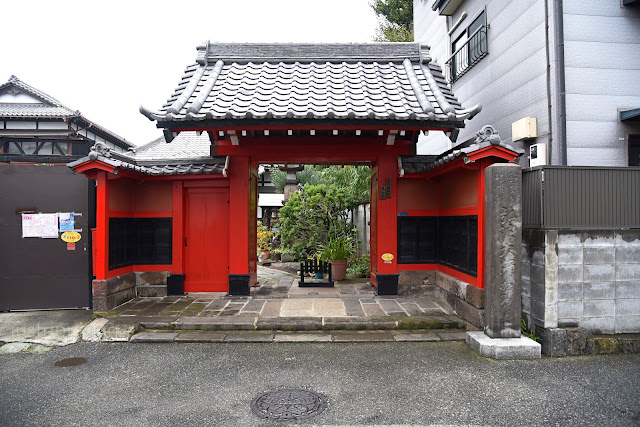




















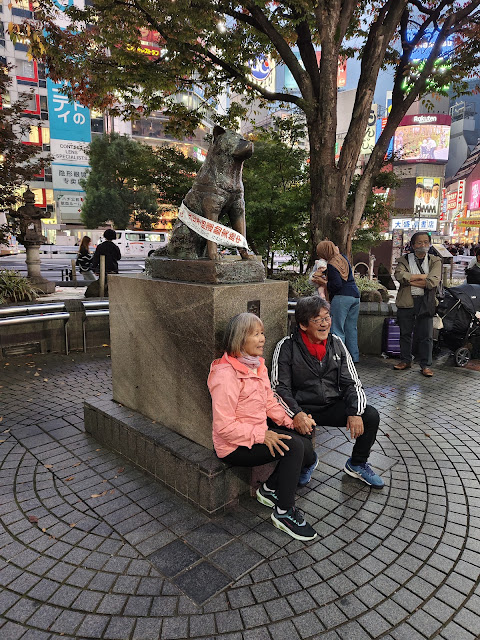










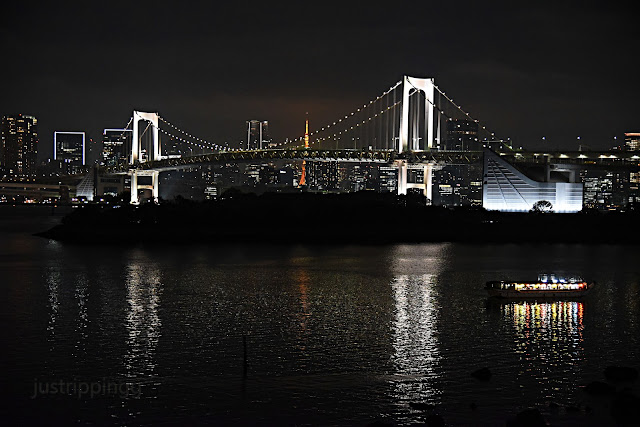
No comments:
Post a Comment